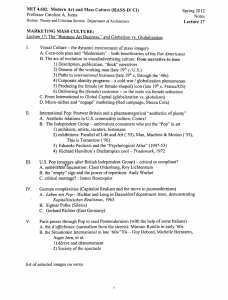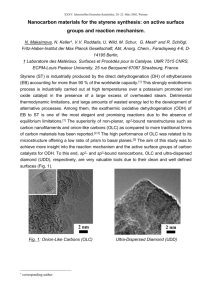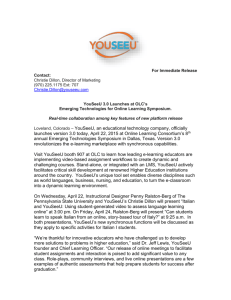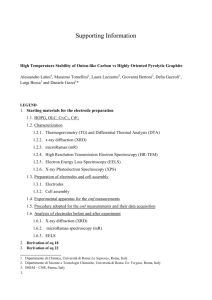Tuning the fluorescence emission of onion
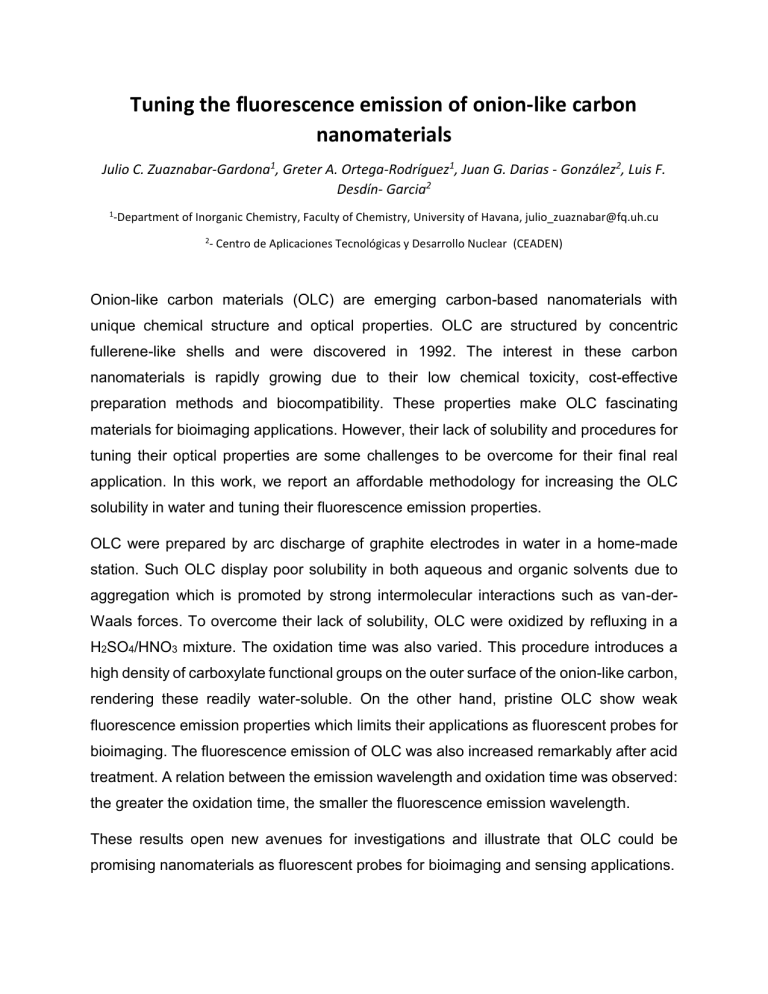
Tuning the fluorescence emission of onion-like carbon nanomaterials
Julio C. Zuaznabar-Gardona 1 , Greter A. Ortega-Rodríguez 1 , Juan G. Darias - González 2 , Luis F.
Desdín- Garcia 2
1 -Department of Inorganic Chemistry, Faculty of Chemistry, University of Havana, julio_zuaznabar@fq.uh.cu
2 - Centro de Aplicaciones Tecnológicas y Desarrollo Nuclear (CEADEN)
Onion-like carbon materials (OLC) are emerging carbon-based nanomaterials with unique chemical structure and optical properties. OLC are structured by concentric fullerene-like shells and were discovered in 1992. The interest in these carbon nanomaterials is rapidly growing due to their low chemical toxicity, cost-effective preparation methods and biocompatibility. These properties make OLC fascinating materials for bioimaging applications. However, their lack of solubility and procedures for tuning their optical properties are some challenges to be overcome for their final real application. In this work, we report an affordable methodology for increasing the OLC solubility in water and tuning their fluorescence emission properties.
OLC were prepared by arc discharge of graphite electrodes in water in a home-made station. Such OLC display poor solubility in both aqueous and organic solvents due to aggregation which is promoted by strong intermolecular interactions such as van-der-
Waals forces. To overcome their lack of solubility, OLC were oxidized by refluxing in a
H
2
SO
4
/HNO
3
mixture. The oxidation time was also varied. This procedure introduces a high density of carboxylate functional groups on the outer surface of the onion-like carbon, rendering these readily water-soluble. On the other hand, pristine OLC show weak fluorescence emission properties which limits their applications as fluorescent probes for bioimaging. The fluorescence emission of OLC was also increased remarkably after acid treatment. A relation between the emission wavelength and oxidation time was observed: the greater the oxidation time, the smaller the fluorescence emission wavelength.
These results open new avenues for investigations and illustrate that OLC could be promising nanomaterials as fluorescent probes for bioimaging and sensing applications.



